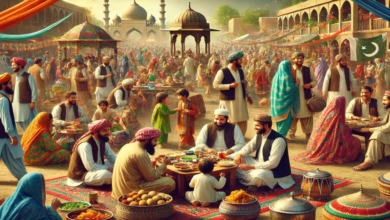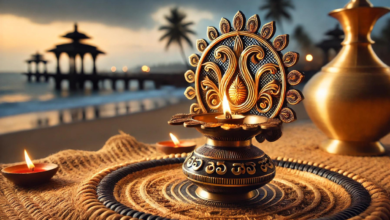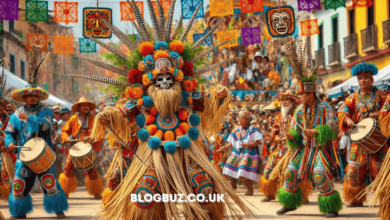Kerîg: The Cultural Heartbeat of Kurdish Heritage

In the tapestry of world cultures, the Kurdish heritage stands out with its rich traditions and vibrant community life. Central to this cultural expression is Kerîg—a series of practices and rituals that bind the community and connect the ancient past with the modern era. This essay goes deep into the core of Kerîg, exploring its historical roots, cultural significance, and the roles it plays in contemporary Kurdish society.
The Historical Roots of Kerîg
The origins of Kerîg are as ancient as the Kurdish people, tracing back to times when oral traditions were the repositories of wisdom and cultural identity. Derived from the Kurdish language, the term embodies practices that foster community spirit and spiritual well-being. Historically, Kerîg included a variety of rituals linked to the agricultural calendar—sowing and harvesting ceremonies—and significant life events like births, marriages, and deaths.
Cultural Significance
Kerîg is more than a mere set of rituals; it is a vital expression of Kurdish identity. It serves as a conduit for passing down values, beliefs, and customs through generations, ensuring that the Kurdish way of life remains vibrant and relevant. Each aspect of Kerîg—from music and dance to storytelling and communal gatherings—reinforces the Kurdish people’s collective memory and cultural values.
Kerîg in Modern Society
Despite the relentless march of globalization and modernization, Kerîg has adapted to remain relevant. In urban settings and diaspora communities, Kerîg serves as a touchstone for those seeking to reconnect with their roots. Modern technology also plays a role, facilitating the preservation and sharing of Kerîg practices through digital media, allowing Kurdish culture to thrive across global boundaries.
The Rituals and Practices of Kerîg
At the heart of Kerîg are the ceremonies and rituals that mark the Kurdish cultural landscape:
- Music and Dance: Traditional Kurdish music, characterized by haunting melodies and rhythmic patterns, accompanies many Kerîg rituals. Instruments like the daf, saz, and zurna are staples in these celebrations, with dances like govend and halay symbolizing unity and communal harmony.
- Storytelling: The role of the ‘dengbêj’—traditional Kurdish storytellers—is pivotal in Kerîg. These cultural custodians narrate tales that encapsulate moral lessons, historical accounts, and the philosophical depths of Kurdish life.
- Communal Gatherings: Kerîg fosters a strong sense of community through shared activities. These include celebrations, religious observances, and communal works reinforcing social bonds and mutual support.
Challenges and Preservation
The survival of Kerîg faces challenges, especially from the diluting effects of modernization and urbanization. The younger generation’s engagement with Kerîg is crucial for its continuation. Efforts to document and innovate within the traditions of Kerîg are vital, ensuring it remains a living, breathing aspect of Kurdish life.
Conclusion
Kerîg is not merely a relic of the past but a living practice that continues to evolve. It embodies the resilience and adaptability of the Kurdish people. As it adapts to the demands of the modern world, Kerîg remains a cornerstone of cultural identity and community cohesion, proving that even in a rapidly changing world, the threads of tradition can weave a solid and enduring tapestry.
FAQs on Kerîg
What is Kerîg?
Kerîg refers to cultural practices and rituals significant within Kurdish communities. It embodies traditions that foster community spirit, preserve cultural identity, and pass heritage through generations.
What are some everyday rituals included in Kerîg?
ComEverydaytuals in Kerîg may include music and dance, storytelling, and communal gatherings. These rituals are often associated with significant events such as births, marriages, and seasonal festivals like Newroz.
How does Kerîg contribute to Kurdish cultural identity?
Kerîg is a vital expression of Kurdish identity, helping to maintain a connection with ancestral traditions and values. It serves as a cultural anchor, promoting unity and continuity among the Kurdish people, especially in the face of globalization.
How has Kerîg adapted to modern times?
Kerîg has shown remarkable adaptability, evolving to incorporate modern elements while maintaining its traditional essence. This includes digital media documenting and sharing rituals, ensuring these practices remain relevant and accessible to younger generations and the global Kurdish diaspora.
How has Kerîg adapted to modern times?
Kerîg has shown remarkable adaptability, evolving to incorporate modern elements while maintaining its traditional essence. This includes digital media documenting and sharing rituals, ensuring these practices remain relevant and accessible to younger generations and the global Kurdish diaspora.
Why is the preservation of Kerîg important?
Preserving Kerîg is crucial for maintaining Kurdish cultural heritage. It ensures that future generations have access to their historical and cultural roots, which are essential for cultural identity and community cohesion.
You May Also Read: Embracing Llaquichan: A Deep Dive into Andean Cultural Heritage




